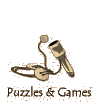 |
|
Tidbits
Did you know?
Page 1 | Page 2
- The Peigans were the smallest band to sign Treaty 7
- Aboriginal People used all parts of the buffalo and created many ingenious items. Buffalo hooves were boiled to make an all purpose glue, horns were used for cups and spoons, the bladder was used to store drinking water and the stomach to simulate a pot and kettle. Hides were used for robes in the winter and were scraped in the summer to make tipis and clothing
- By the 1700s horses were used on the plains and the buffalo hunt was transformed. Hunters could travel farther on horses to find grazing buffalo. Aboriginal People began to have access to trading posts where they could exchange surplus buffalo hides for European goods
- Blackfoot moccasins were made of tanned leather tops with a hard sole of untanned hide
- Blackfoot people tend to use colors that are bright as they reflect the bright sky and the brilliance of seeing objects viewed in direct sunlight
- Moccasins worn every day were not usually decorated. For special occasions, however, the footwear was decorated with porcupine quills or beads. Before European traders introduced beads, colored moose or horsehair was sewn on the moccasins. Men's moccasins were cut low while women often wore a higher wrap around style that touched the bottom of their dresses. The higher top style provided warmth and protection.
- To harvest Porcupine quills, Blackfoot women would corner the animal and cover it with a blanket. This would scare the porcupine, causing it to drop its quills out of fear into the blanket.
- There are six main design patterns used for decorating Blackfoot moccasins
- Blackfoot women generally used only red, white, blue, yellow and green to decorate moccasins with quills or beads
- The oldest moccasin design is known as 'Crooked Nose Quillwork'
« Back Top
|
|
 |
 |
 Heritage Community Foundation Presents
Heritage Community Foundation Presents Heritage Community Foundation Presents
Heritage Community Foundation Presents













